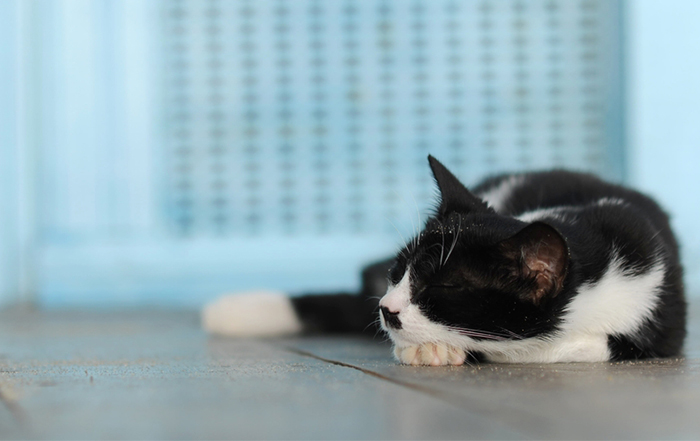Why do cats try to return to their old house?
Cats are very territorial animals and they may have problems accepting a new house as their home. If the old house is nearby cats may return to their old haunts and try to take up residence with the new people living there. If the move is further away cats may just wander off and get lost.
What can I do to help my cat settle in a new home?
- Before leaving the old house cats should be fitted with an identity collar (elasticised) with the owners name and new address. A microchip is also essential — make sure you update the chip database with your new address details.
- Cats should be transported in a safe well secured container such as a cat basket or cat box so there is no danger of escape.
- It is best to move your cat last and have everything set up in the new house i.e. familiar bedding / furniture etc. Ideally wait till the removalists / tradesman etc are all gone before taking your cat.
- Boarding your cat in a good cattery is an excellent idea during the transition time. That way you cat doesn’t see all the packing up and you can introduce your cat to its new house when it’s more ordered and cat friendly.
- Cats should be given lots of extra attention, petting and extra food during the period of settling in. The cat should be fed indoors for at least 10–14 days before being let outside. This means you need to be very careful leaving doors open during this time. Place you cats litter bowl and food bowl somewhere quiet and private but not too close together.
- Once the cat has begun to accept the house then it can be shown the garden. At first, it should only be let outside before meals so food can be used to lure the cat back inside if it wanders too far. Cats are much more likely to fight in a new territory so careful observation and curfew attention is vital especially in first few weeks.
- Initially the cat should be let out alone only for short periods during the day. It should be hungry so that it will not wander too far and will readily respond to a call when its meal is ready.
- If possible try to avoid having builders working in the house during the initial settling in period. Cats hate this and it will inevitably make readjustment more difficult.
How long will it be before I can safely let my cat outside alone?
This is very variable depending on the disposition of the cat and how much time has been spent on making the cat feel at home; some cats take only a few days to settle down whilst others may take three weeks or more. Outdoor cats with a wide experience of change tend to cope best but even they should be kept in for a week to give them a chance to learn about their new home.
Once you cat is looks confident inside the house it is probably ready to go out. Signs of cat confidence include walking with tail up in air, rubbing nose on corners and furniture, not running away from doorbell / strange noises etc. Some cats can benefit from short periods on anti anxiety medication during the moving process — this would need to be discussed with your vet.
My cat keeps returning to our old house. What can I do?
This happens because the bond with the new home is not sufficiently established. Measures must be taken to establish the new home as the source of food and shelter (in contrast to the old house where these things are denied him). It may take weeks or months before the cat can safely be let out unattended.
- Keep the cat indoors at the new house for about a month. Use the guidelines given above to try increase the bond with the new house. It may help to feed the cat small meals several times a day.
- When the cat is first let out it should be starved for 12 hours so that it is really hungry. It should be left out for only a short time and then called in and fed. For the first two weeks it should only be let out once a day and be called in after no longer than 30 minutes and fed immediately.
- Warn the new occupiers of your old house and discourage them from feeding the cat, talking to the cat or otherwise encouraging it. In some cases active deterrent action can be tried such as turning the cat out and throwing water at it.
- Other neighbours, even those who were previously friendly with the cat, should be asked to behave similarly.
- As a last resort consider boarding the cat for a few weeks in a cattery as far away as possible from either home to try to scramble its memory of its old home and its homing mechanism.
- If all else fails encourage the new owners of your old house or their neighbours to adopt your cat.
My cat never goes outdoors so moving house should be straightforward
Moving house can be just as traumatic for the indoor cat because it involves a complete change of personal territory. Gradual introduction one room at a time with lots of attention will help to reduce the stress of the upheaval.
